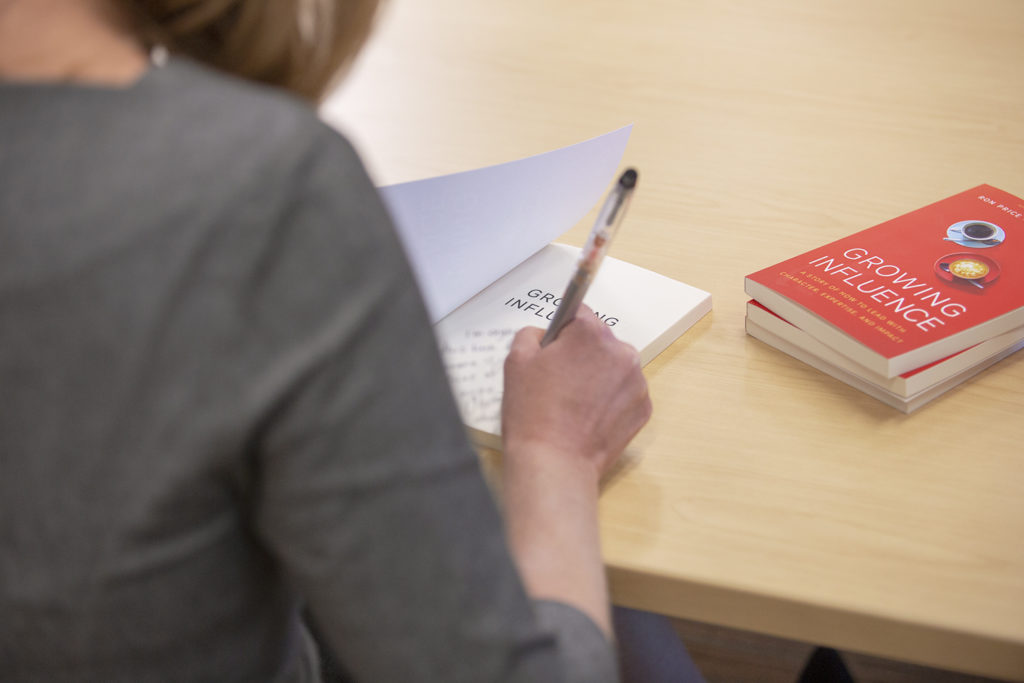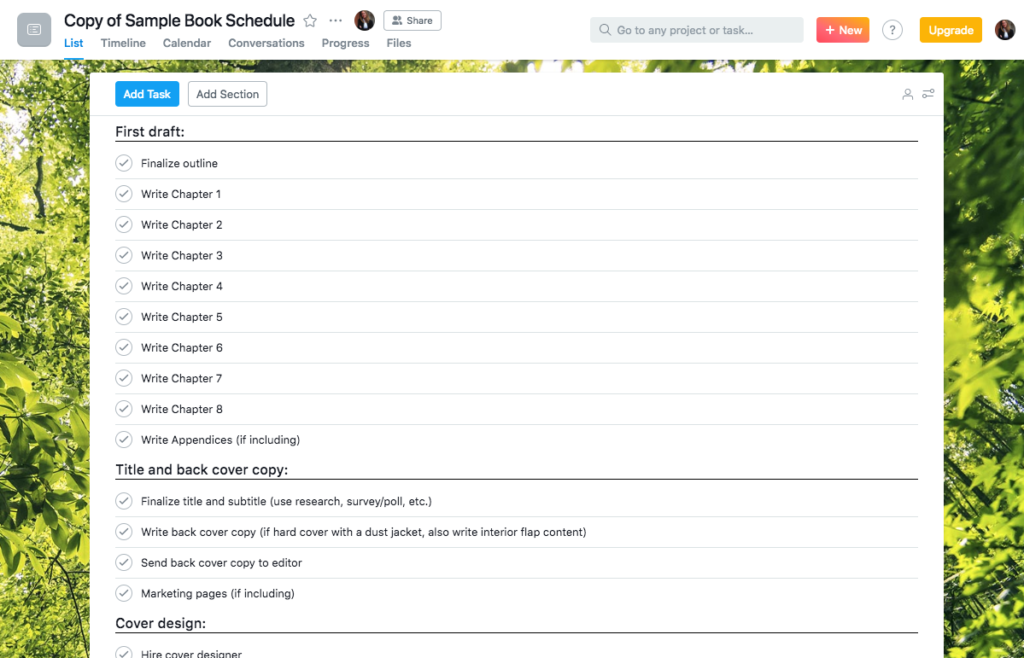Post updated July 2025.
Toward the end of 2018, I sent over a book draft to a ghostwriting client. Earlier that year, I had a coauthored book published, and delivered another draft to a ghostwriting client. On average, I write 2.5 books per year plus other content, like guest articles and blog posts like this one. I am usually coaching at least two people, meeting virtually several times a month. And this is alongside a full travel schedule that includes trainings, consulting, media interviews, and speaking engagements, not to mention personal travel.
I tell you all this not because I want to seem uber-productive. I have a lot of help, productivity hacks, and support to make all this happen. I share my workflow because, if I were on the outside looking in, I’d think it was nearly impossible to write award-winning, best-selling books. But after more than a decade immersed in writing and books, I’ve learned a few things about the process that you can use to get your own book done. Ready? Let’s dig in.
#1 Plan, plan, and plan some more
I am not a naturally organized person. My brain would much more happily frolic through a field of chaotic daisies than spend time in Marie Kondo’s linen closet. But I’ve learned that my natural creative chaos needs structure to become productive creativity. My work demands systems and structures; my home and office require organization. That doesn’t mean I don’t slip, and my husband will tell you I’m not the tidiest person in the world, but I strive for simplicity, structure, and systems.
It’s no different with writing a book. At the outset of every book project, I create a detailed outline that describes, with clarity, each chapter and what it will contain. For informative non-fiction projects, that outline is incredibly detailed; for idea- or story-driven books, the outline is descriptive but less structured. I spend about a month on this stage, sometimes more, with every book project.
The goal in planning your book is to suss out any problems before you begin writing. It’s also to do all the not-so-fun work so that, when you sit down to write, you get to only create. Planning doesn’t stifle creativity, it sets it free—with a little nudge in the right direction.
I used to think authors would sit down with their laptops every day and just write: no plan, no pretense, just pure magic to get that manuscript done. In my vision was a piping hot cup of coffee, a fire crackling in the background, and a cat curled up on the sofa. And somehow—voilà!—a book would emerge.
The reality is that the human brain doesn’t work that way. Rather, our brains are wired for distraction. We need to plan, and commit to that plan, to get our books written.
#2 Organize your writing process
Once my outline is done, the next step is to plan out the writing process. I use project management software (my software of choice is Asana), and I work backwards from my publication goal date. Here’s how to do that: generally, from the time your manuscript is totally complete and ready for proofreading, it takes about nine months to publish if you want to do things the right way (send advance reader’s copies to media, etc.). You’ll also need around three months for editing and revision working with a professional editor. So, that’s twelve months. You also need to write the book, which can take anywhere from a few months to a year or more. To be safe, let’s say six months.
So, an example: assuming you’re planning to begin writing today, add six months to write your book, then another twelve months (three for editing, nine for production and publication). Eighteen months out from today, in this scenario, is your estimated publication date.
Building on that example, let’s say you’ve decided you want to write your book in six months, or about twenty-four weeks. It’s ten chapters, according to your outline. To be safe, I suggest subtracting a month to give yourself wiggle room, so twenty weeks. Then, divide by the number of chapters: roughly two weeks per chapter. Then, set actual deadlines for each chapter, and input them into your calendar or project management software.
I’ve created a sample book schedule that I use for every new project. There are several more sections to it, but the top is how I plan the writing process. After copying the schedule over and renaming it to the current book I’m writing, I then assign dates to each chapter using the formula I just shared.
After you set your own plan, you have to stick with it. If something major comes up, you have a month of wiggle room—if not, you’ll be done early and can take a breather from the project. These are now your deadlines. You live and die by them. This plan is your key to writing your book.
#3 Get support (and put down a deposit with an editor)
One of the reasons I’m able to complete multiple books each year is because I have incredible support—both professionally and at home. My team plays a key role in helping manage the business and supporting the book-writing process at critical points. At home, my husband is deeply supportive—he understands the pressure of a deadline and helps create space for me to focus.
A few tips to bring support to your project: once you’re about halfway through writing your book, sign a contract with an editor. Give yourself a month of grace in the date you promise to deliver the manuscript (hence the month we subtracted earlier), but pay the deposit and put the deadline on your calendar. There’s nothing like money and a deadline to drive you to get that book done.
Also, for the last two weeks of your writing plan, don’t schedule anything. If possible, book a cabin away for a week or even a couple of days. Ask your family to support you in achieving this goal. Honor the process of finishing your book.
And when that baby is done—every single step and stage, including draft one, two, three, and so on—celebrate! It’s an incredible accomplishment to write a book. It takes planning and grit, but it’s so worth it.
If you’re a seasoned author, what would you add to this? If you’re writing a first book—or aspire to write a book—what has been difficult? What have you learned? What questions do you have about the process? Please share below. I read every comment and love hearing from you.


This is helpful to me! I’m considering a couple book ideas at the moment. 🙂
I’m so glad it’s helpful, Cameron! If you’re writing nonfiction, as you consider which book idea to pursue, you might ask yourself, “Which best aligns with the life I want to live, story I want to tell, and message I want to share?”
I don’t outline in quite that detailed of a manner, but I do once I am partway through the manuscript (I am a combo pantster/plotter in a weird sort of way. But I agree with all of these. Plan. Write every day. Set a schedule. Treat your writing like the business (and the job) it is, and you will accomplish a lot more.
Although I too would rather frolic through a field of daisies, but don’t tell anyone.
Thanks for the input, Troy! Treat your writing like a business—that’s a good one. Glad to know I’m not the only one mentally frolicking through daisies. 🙂
These are such helpful tips, thanks!
Wonderful! I’m thrilled you find this useful.
[…] coach and writer Stacy Ennis points out, paying a deposit and setting deadlines with an editor will motivate you to stay on track. […]
[…] coach and writer Stacy Ennis points out, paying a deposit and setting deadlines with an editor will motivate you to stay on track. […]
[…] coach and writer Stacy Ennis points out, paying a deposit and setting deadlines with an editor will motivate you to stay on track. "There's […]
Is the timing (3 months for editing, 9 months for production and publication) the same for self-published and working with a publisher? Since you mentioned putting down a deposit for an editor, that makes me think that this is a model for self-publishing so I wanted to check. And thanks! This is helpful!
Thanks for reading and commenting, Ronda! These are general timelines for a partner published or self-published book, giving enough time to send out advance reader’s copies and create strong buzz around the launch. Traditional publishers typically have their own (longer) time frames. I appreciate that point of clarification, and I’m glad you found this helpful.
Hey Stacy, great piece! I’m excited to already have a deal in the works with a publisher for my first book. Can you help me understand—are you recommending that authors hire an independent editor in addition to the editor we will work with at the publisher? Or is the publisher editor enough? Thanks!
Thank you, Michelle! If you already have a publishing deal in the works, I suggest reaching out to your publisher to clarify exactly what type of editing is included. If they say “substantive” or “content” editing, you’re golden. Substantive editing and content editing are interchangeable terms—it is essentially the editing stage that digs into the content itself (versus just the writing quality), including structure, voice, and overall effectiveness. If they say “copyediting” or “proofreading,” but don’t offer the higher-level editing as part of your agreement, I suggest hiring editing separately. In almost 100% of cases, a book should have: 1) one round of content/substantive editing, 2) one round of copyediting, and 3) at least two—but ideally three—rounds of proofreading. I hope this helps! Let me know if you need anything clarified.
Hi Stacy
Greetings and thanks with appreciation for your your suggestions. I have already doing the planning and planning and organizing the content but do not have funds for now to look the editor and thinking to get an editor with the affordable fee. Then I can consider because I have over 5 books topics waiting for me to write.
I’m glad this was useful, Berick. Editor fees can vary widely. I hope you find the right-fit editor to support you!